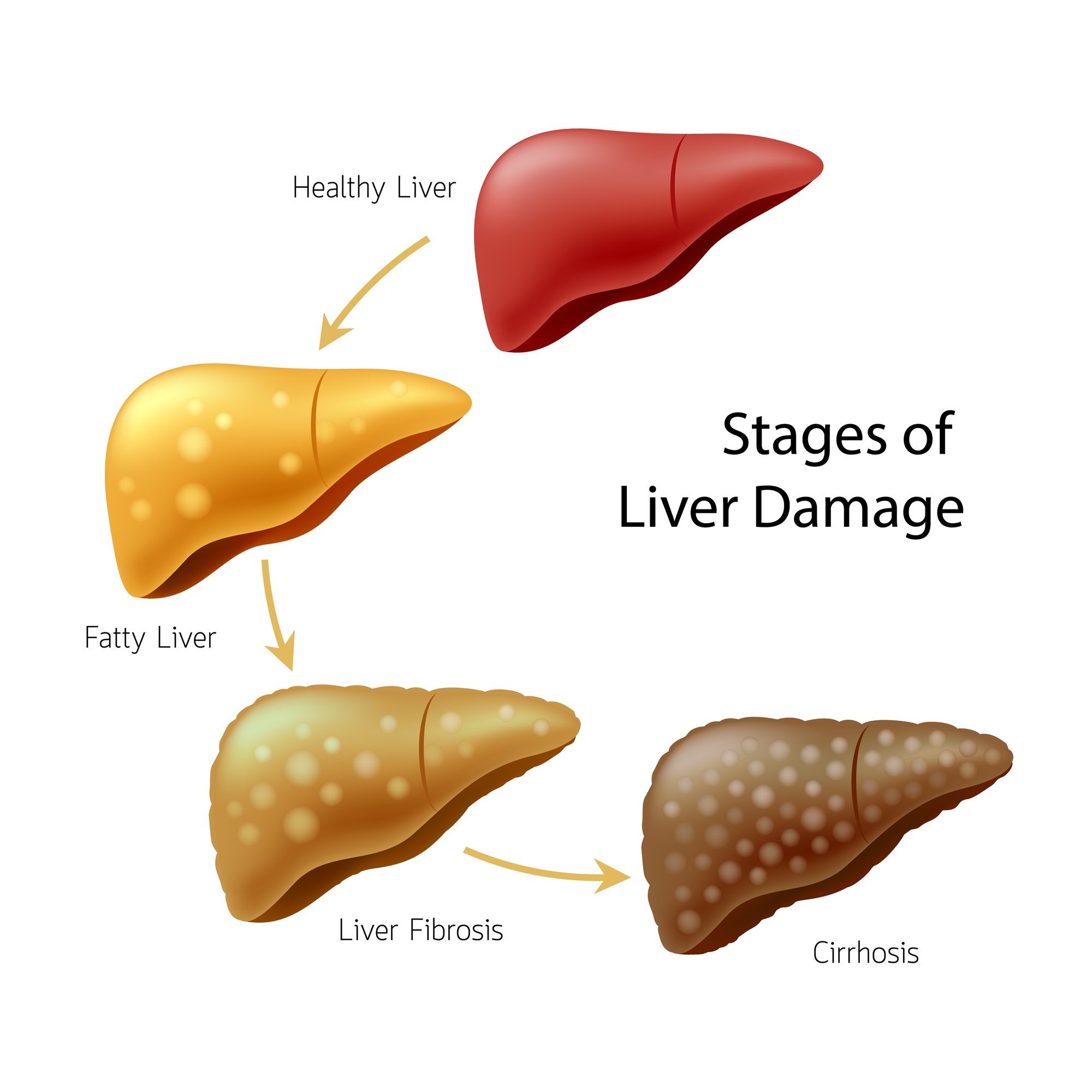Definition
Liver Cirrhosis is diffused inflammation and fibrosis, forming regeneration nodules, affecting normal liver function, and causing the obliteration of portal flow and portal hypertension. The occurrence of cirrhosis isn’t sudden, and it is a kind of chronic injury which affects the whole body.
Etiology
Hepatitis B, hepatitis C, alcohol and hepatotoxicity drugs have been the common causes of liver cirrhosis. Other causes include autoimmune hepatitis, genetic and metabolic diseases, parasitic infections, obstruction of hepatic veins, or other unexplained condition.

Symptoms
Many people with liver cirrhosis have no obvious symptom in the early stage of the disease. However, as the disease progresses, they may experience the following symptoms:
- Jaundice, palm erythema, spider nevus
- Ascites, leg pitting edema, oliguria
- Portal hypertension (esophagus varices or gastric varies, hemorrhoids, or abdominal wall varicose vein)
- Splenomegaly, anemia, and bleeding tendency (such as gums bleeding, gastrointestinal bleeding, and bruise easily)
- Hepatic encephalopathy
Clinical Evaluation and Diagnosis
In generally, jaundice, ascites, conscious status, coagulation function test, and serum albumin level are taken to be the factors of prognosis. Abdominal ultrasound is the most commonly used diagnostic tool for cirrhosis. Liver biopsy is still the most accurate way of diagnosis. Other noninvasive methods of examination include: Acoustic Radiation Force Impulse (ARFI), liver fibrosis scan (FibroScan) or other image modalities.
Treatment
Liver Cirrhosis is unlikely to be recovered. Therefore, the prophylaxis is important. People who have chronic hepatitis B with acute exacerbation should receive the anti-viral therapy. Chronic hepatitis C patients should seek applicable medication, and alcoholic liver disease patients should quit alcohol as soon as possible.
The complications are jaundice, hemorrhage, ascites, esophageal or gastric varices bleeding, hepatic encephalopathy, and liver tumor (nodules or hepatocellular carcinoma). Treatment of complications is the major problem on cirrhotic patients. Patients should visit the OPD regularly and take the abdominal ultrasonography and biochemical test. Moreover, they need to take the esophagogastroduodenoscopy (EGD) to evaluate esophageal or gastric varices. If esophageal varices bleeding happens, endoscopic varices ligation should be done. Liver transplant is considered when complications of cirrhosis cannot be controlled by treatment.
Diet suggestions for cirrhosis
- If patients’ conditions are stable with no edema or encephalopathy, they can be given the balanced diet with applicable protein and calories. If patients are with hypercatabolism or malnutrition, their dietary intake should increase calories supply.
- It should stop protein supply in hepatic coma, supply carbohydrate or lipid instead.
- Eat food which contains plant protein for it provides higher branched-chain amino acids to improve hepatic coma.
- Chew carefully and swallow slowly, and avoid eating hard or fries food, if patients have esophageal varices.
- If patients have massive ascites and edema, sodium and water should be restricted.
- Avoid alcohol completely. Coffee, black tea, and green tea can be drank appropriately.
- Avoid food which produces high ammonia, food like sausage, ham, cured meat, cheese, and peanut butter.
- Decrease fat supply when patients have steatorrhea, and have patients eat appropriate medium chain triglycerides.
- Prescribe appropriate vitamins and minerals by doctors and nutrition consultants.

